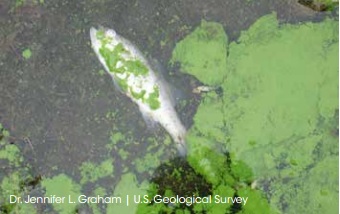Press release and staff report
news@wbcowqel.com
Crawford County Public Health was notified on July 15, 2015, that the Bucyrus, Ohio Pine Reservoir (#2) had developed a potential Harmful Algal Bloom (HAB). Bucyrus City water plant personnel and Ohio Environmental Protection Agency notified our office of the potential HAB this morning.
The reservoir on Stetzer Road, which can also be viewed from County Road 330 (Lincoln Highway), is not used for drinking water. The drinking water for the city of Bucyrus is unaffected by the bloom in the reservoir.
At this time, the reservoir will not be tested for toxicity levels. However, everyone should be aware of the situation. As a precaution, no boats should be allowed in the reservoir. Most importantly, no humans or pets should have contact or drink water from the reservoir.
Recently, Toledo dealt with a much larger algal bloom problem. The city of Norwalk had just lifted their “no contact” ban on one of the city’s reservoirs, as well. Treatment of the algae can be done to help slow or eliminate the bloom.
Algal blooms are often largely a result of agricultural runoff. For more information regarding Harmful Algal Blooms please visit the Ohio Department of Health’s Website: http://www.odh.ohio.gov/odhprograms/eh/HABs/algalblooms.aspx or the Ohio Environmental Protection Agency’s Website: Ohioalgaeinfo.com.
Algae blooms of this type have been linked to the closing of beaches in numerous places in Lake Erie and serious problems at Ohio’s largest lake next to Lake Erie, Grand Lake near St. Mary’s. The Grand Lake problem led to bans on swimming and other restrictions.
Bucyrus City Council recently enacted legislation that bans swimming in all Bucyrus reservoirs. Those reservoirs are not staffed by lifeguards.


